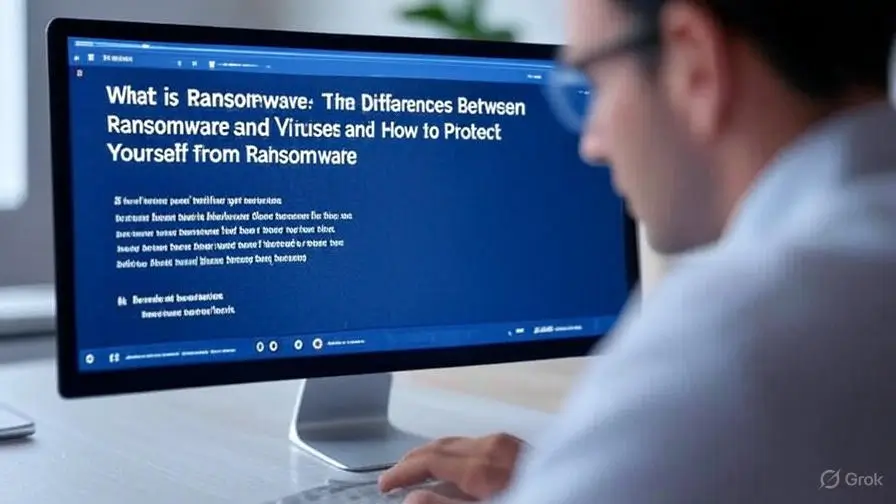

What is ransomware. The differences between ransomware and viruses and how to protect yourself from ransomware
Modern cyber world is characterized by a large scale and complexity of threats on internet. Ransomware is one of the most disruptive, a malicious program that locks or encrypts the files of a victim and requires payment in order to restore it. Individuals and organizations are thus forced to have a thorough knowledge of how ransomware works, its differences with the traditional virus and how each of them can protect themselves.
Simply, Ransomware is unethical software system with the aim of making this computer system or files access unattainable until the specified amount of money is paid. It is normally introduced through phishing mails, malware installation or through security vulnerability exploitations. When executed, it begins to encrypt files or lock the network up entirely and leaves a note demanding a ransom payment, in most cases, and asks in cryptocurrency.
Ransomware is usually categorized in 2 major classes:
•Encryption-encryption ransomware that allows hackers to prevent the information of the users; and
• Ransomware that initiates locking of the entire system.
Ransomware vs. Traditional Viruses: What’s the Difference?
While both ransomware and computer viruses fall under the category of malware, they function differently:
| Feature | Ransomware | Virus |
|---|---|---|
| Goal | Extort money by denying access to data | Spread and damage systems or files |
| Visibility | Often immediately noticeable | May operate silently |
| Propagation | May or may not self-replicate | Designed to replicate and spread |
| User Impact | Demands payment; potential data loss | Slows system, corrupts data or causes crashes |
The ransomware, definition-wise, is purely financially oriented and straight to the point when compared to viruses which are more often applied to create disturbances or harm. In prevention of ransomware, it is essential to have a multifaceted strategy that includes education, good digital practices, and technical strategy. The following are the recommendations that will be critical to your security: Update All Programs Update your operating system and antivirus scanner, and all programs that are installed periodically. Vulnerabilities that hackers allocate to exploit are remedied through security patches that have alarming regularity. Application of Reliable Security Software Install and keep a trustworthy virtual antivirus or complete internet security program which offers real time blanket security and shields customizable to ransomware. Protect Your Important Data Keep backups of overnight or vital files: on your local backup and on external backup as well as in a cloud, too. Such precautions will allow retrieval of information without necessarily heeding to extorsions. Be Alert of Emails and Links Ransomware is most commonly distributed by using phishing scams. Do not open any attachments or links of unknown or unreputable senders. Do not enable Macros and Remote Desktop Protocol (RDP) Holistically, a significant percentage of ransomware initiatives use macros or RDP to attack systems. Appoint strict access to remote services and disable these features unless it is really necessary. Support, and Be Open to, Awareness One of the strongest barriers is education and communication. Train those employees or important contacts so that they could identify suspicious activity and also maintain high online safety standards.
Final Thoughts
Despite the fact that ransomware is a considerable threat, careful measures would significantly decrease exposure to risk. In comparison to more traditional viruses, which aim at simply causing havoc, ransomware works with the clear motive of bringing financial profit and can lead to an irreparable loss of data. Using the latest software, following proper online etiquette and ensuring strong backup systems, both people and organizations can protect against hacking.
Alertness is the pillar of security.










